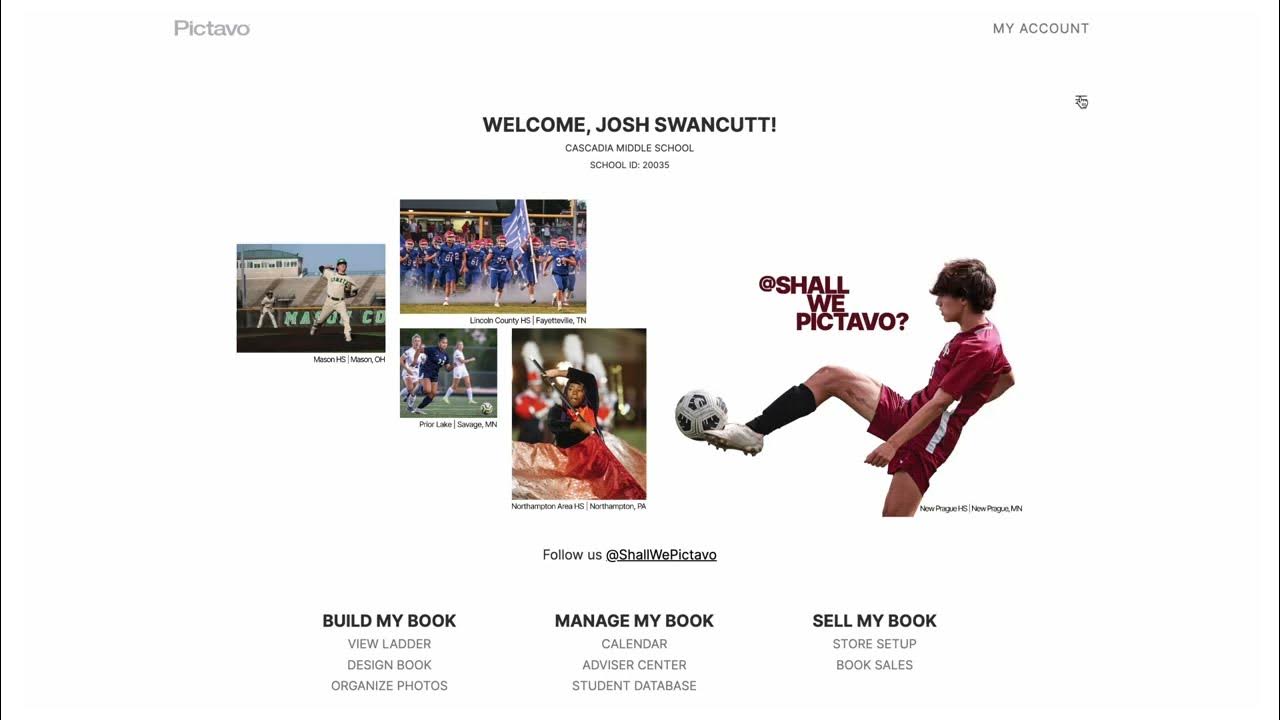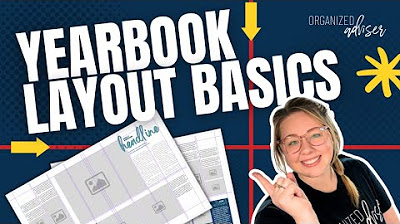Jostens: Adapting a Chronological Ladder
Summary
TLDRIn this tutorial, Ava Batsu, a yearbook advisor with 22 years of experience, discusses designing a chronological ladder for a yearbook. She contrasts the traditional ladder, organized by sections like student life and sports, with a time-based chronological approach. This method allows for flexible coverage, integrating school events, extracurriculars, and social media trends into weekly or monthly spreads. Ava also highlights the importance of personality profiles, student surveys, and using platforms like Instagram and TikTok for story ideas. The session is an informative guide to creating a modern, relevant, and engaging yearbook.
Takeaways
- 😀 A traditional yearbook ladder organizes content into sections like student life, sports, clubs, and academics, divided by dividers.
- 😀 A chronological yearbook organizes content based on time periods such as fall, semester, or monthly dividers, integrating events from all sections.
- 😀 Weekly, bi-weekly, or monthly spreads in a chronological yearbook highlight key stories from those time frames, starting with the most important events.
- 😀 Small stories, like trending topics or social media updates, can also be featured alongside dominant stories to add variety to spreads.
- 😀 Story ideas can be gathered from school events, social media, and trends, helping to cover content from multiple perspectives.
- 😀 Ava recommends using social media platforms like Instagram, TikTok, Facebook, Twitter, YouTube, and Spotify to stay updated on trends and gather ideas.
- 😀 School-wide surveys, like those created with Google Forms, are an excellent way to get story ideas and engage with the student body.
- 😀 Personality profiles allow students to share their stories, such as defining words or personal interests, providing unique content for the yearbook.
- 😀 Profiles can range from group features, like seniors talking about meaningful words, to individual profiles, offering personal insights into students’ lives.
- 😀 The chronological format allows for a cohesive design throughout the yearbook, where modules (like the same layout for certain stories) help create visual consistency.
- 😀 The flexibility of the chronological ladder offers space for a variety of story types, including themes, personality profiles, and smaller feature stories, making the yearbook more dynamic.
Q & A
What is a traditional yearbook ladder?
-A traditional yearbook ladder divides the content into compartmentalized sections, such as student life, sports, clubs, and academics. Each section is indicated by a divider page and includes a list of topics to be covered within those categories.
How does a chronological yearbook differ from a traditional one?
-A chronological yearbook is organized based on time, with sections divided into time-based segments like fall, marking periods, or months. It integrates school activities like sports, clubs, and student life into these time-based sections rather than compartmentalized sections.
What are the benefits of using a chronological ladder for a yearbook?
-A chronological ladder allows for a more fluid storytelling approach, capturing the progression of events and stories throughout the year. It helps to include timely and relevant content, reflecting the changes and activities in school life on a weekly, bi-weekly, or monthly basis.
What is the structure of a weekly spread in a chronological yearbook?
-A weekly spread starts with a dominant story, usually the most important event of the week. Smaller stories can be included for less significant moments. These can include trending social media topics, polls, and thematic links to maintain a cohesive look throughout the yearbook.
How do students get story ideas for a weekly spread?
-Students can look for story ideas by observing events and personalities at school, as well as following social media platforms like Instagram, Facebook, Twitter, TikTok, YouTube, and Spotify. They can also design school-wide surveys or smaller surveys on social media to gather input.
What are personality profiles, and how are they used in a chronological yearbook?
-Personality profiles are a way to highlight students by showcasing their thoughts or qualities. These can vary in size, from small features on individual students to larger group profiles. For example, a group of seniors might discuss a word or phrase that defines them, or students can describe what makes them happy.
What is the role of social media in creating content for a chronological yearbook?
-Social media plays a significant role in gathering content for a chronological yearbook. Students can look for trends, events, and content related to their school or community on platforms like Instagram, Facebook, Twitter, TikTok, and YouTube, which can inform stories and ideas for spreads.
How can Google Forms be used in yearbook content creation?
-Google Forms can be used to create school-wide surveys that gather feedback from the student population. These surveys can help generate story ideas and provide input for smaller, specific features that reflect the interests and opinions of the students.
What is a 'show stopper' in a yearbook?
-A 'show stopper,' also known as an icebreaker page, is a feature or theme-based story designed to capture attention. These stories can include unique or impactful events, profiles, or trends that stand out and engage the yearbook audience.
How do personality profiles contribute to the overall design of the yearbook?
-Personality profiles provide a personal touch to the yearbook by featuring individual or group stories. They can break up traditional content and add variety to the yearbook’s overall design, showcasing the diversity and uniqueness of the students. These profiles can take many forms, from larger spreads to smaller, more intimate features.
Outlines

This section is available to paid users only. Please upgrade to access this part.
Upgrade NowMindmap

This section is available to paid users only. Please upgrade to access this part.
Upgrade NowKeywords

This section is available to paid users only. Please upgrade to access this part.
Upgrade NowHighlights

This section is available to paid users only. Please upgrade to access this part.
Upgrade NowTranscripts

This section is available to paid users only. Please upgrade to access this part.
Upgrade NowBrowse More Related Video

Pictavo Walkthrough

Current Affairs Yearbook 2024 Bangla PDF Download | TWS Academy | Jan - Dec 2024 CA | SSC | NTPC

Yearbook Layout Basics | Organized Adviser

How Canva Built a $40 Billion Empire

Taare Zameen Par | Emotional Scene 😢#taarezameenpar #emotionalscene #aamirkhan #bollywood #hindi

The Epik AI Yearbook Trend Taking Over Social Media
5.0 / 5 (0 votes)